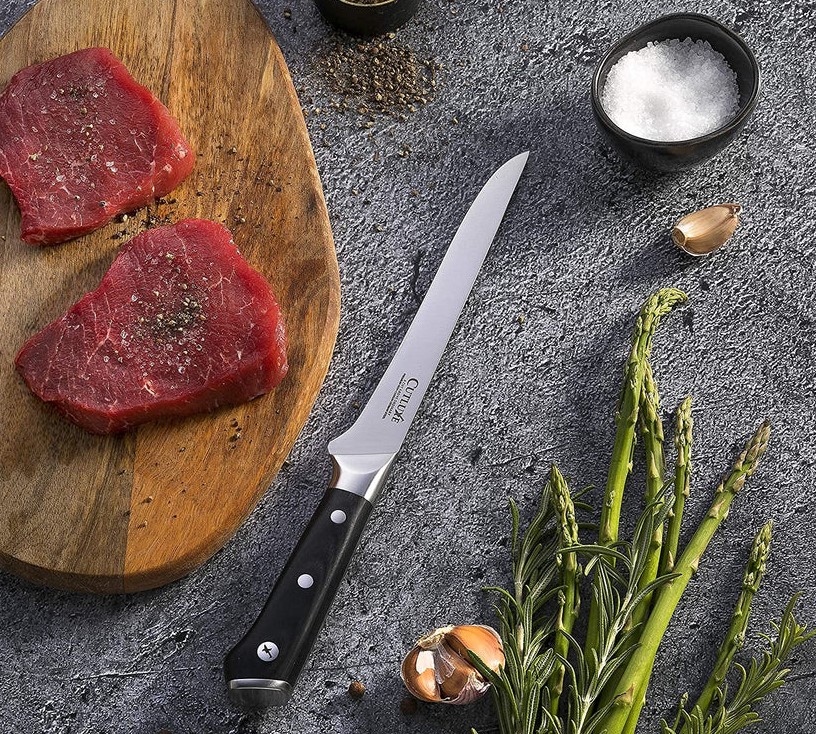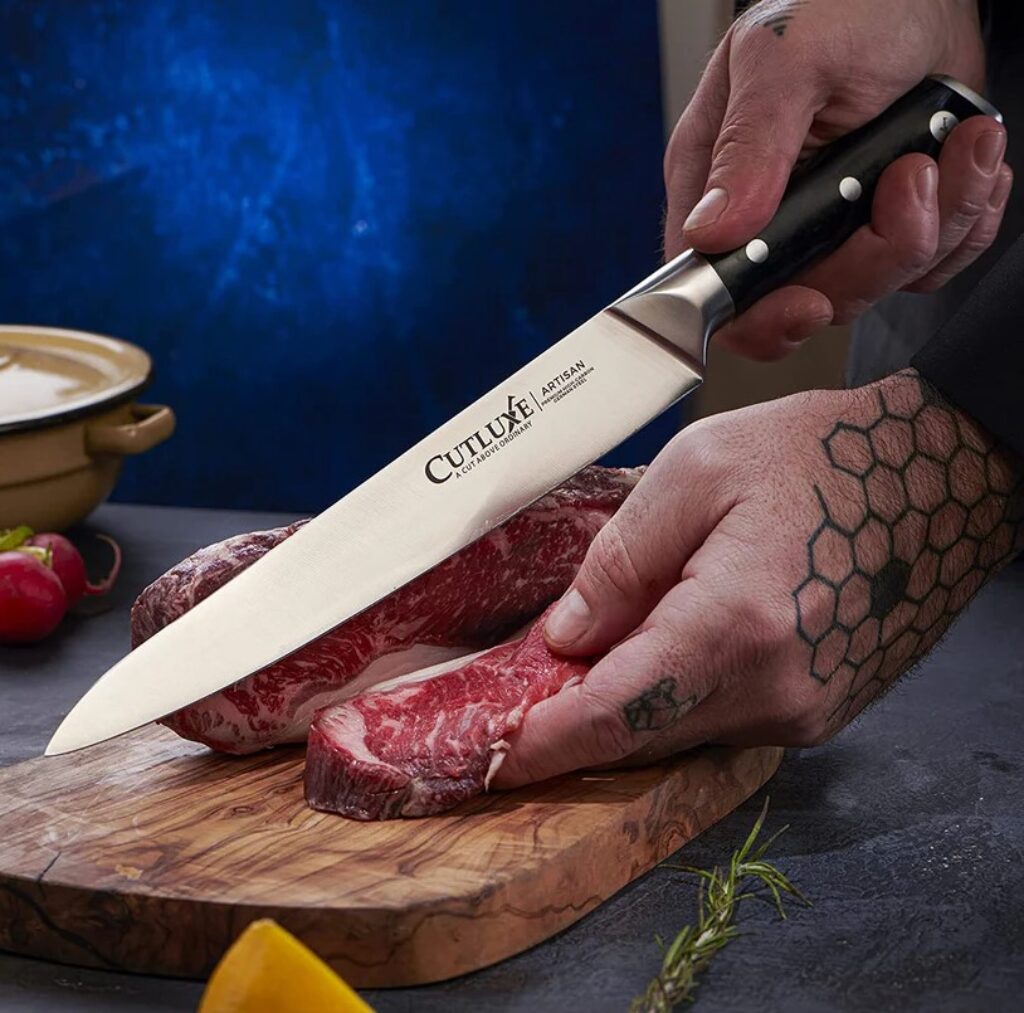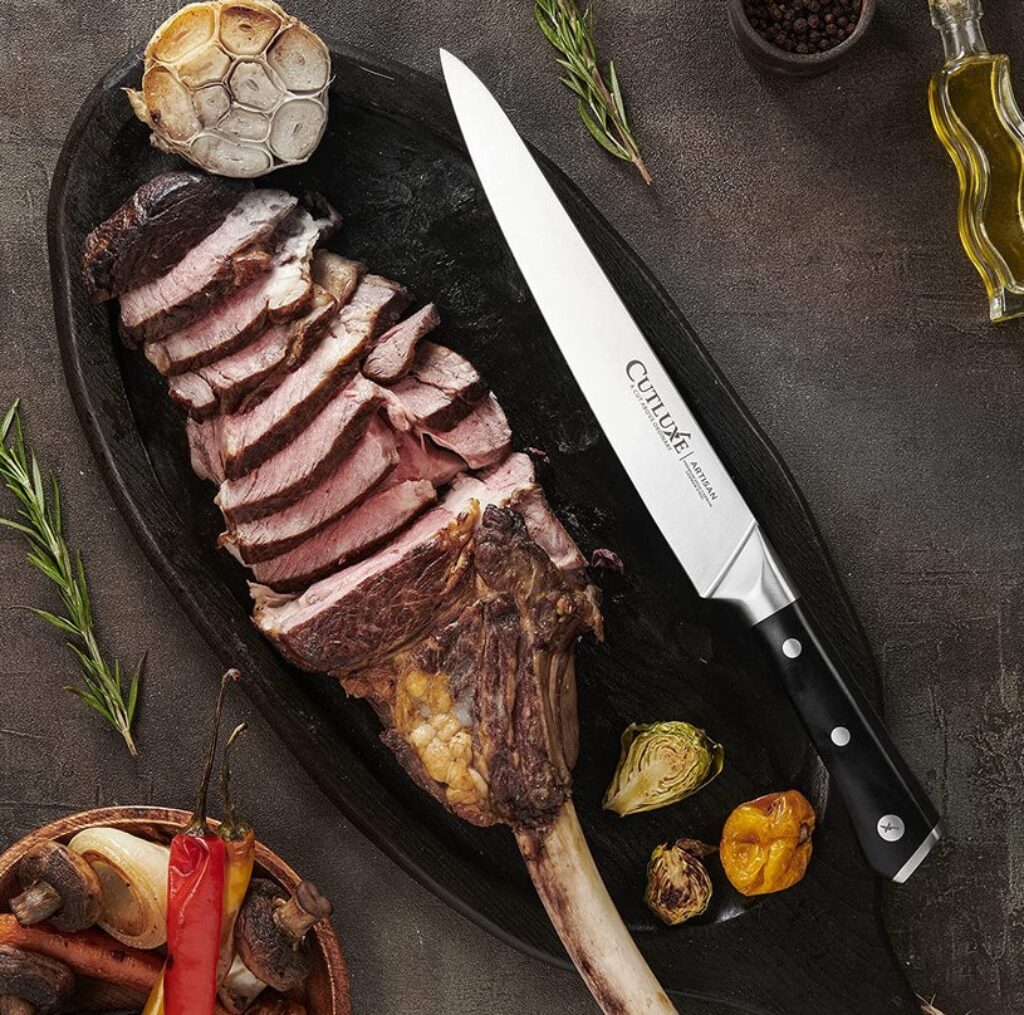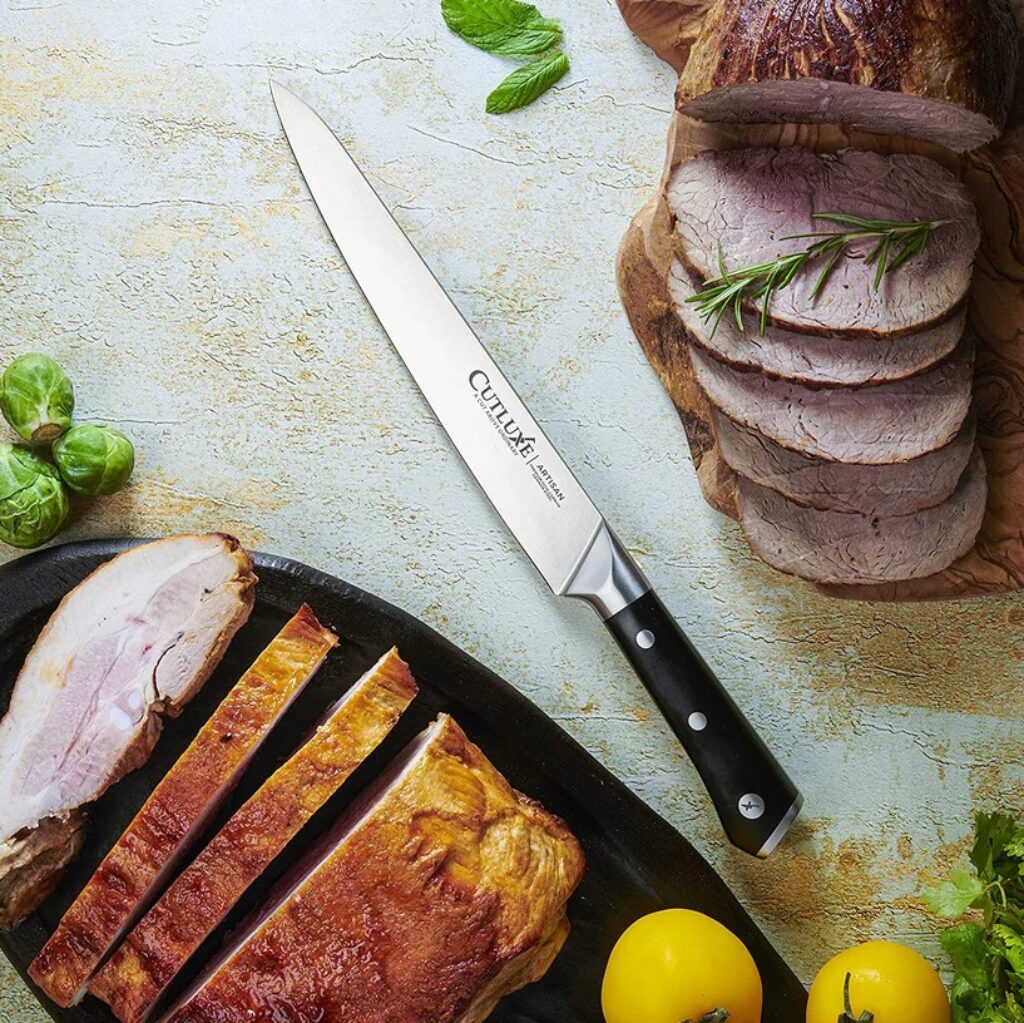
A good kitchen knife changes everything. Chopping becomes smoother. Meals come together faster. And cooking feels less like a task and more like something you control. But when it’s time to buy your first quality blade, the options can confuse even smart shoppers. Steel types, tangs, blade shapes, price ranges—it’s a lot.
You don’t need a drawer full of blades. You need one solid knife that does what it should. This guide shows you how to find it.
Table of Contents
A Trusted Option Can Save You Money and Headaches
Many knife brands exaggerate their value. They lean on flashy packaging, vague claims, and inflated prices. What matters is performance—not marketing noise.
If you’re looking for a sharp, balanced blade that doesn’t break your budget, you’ll find strong value in Cutluxe cut knives. They deliver professional-level slicing with precision and ease, offering the kind of control you’d expect from much more expensive blades.
You don’t need luxury branding to get reliable results. You just need a knife that cuts clean, holds its edge, and feels right in your hand.
Start with Blade Steel — It’s the Core of Everything
Blade steel isn’t just a fancy term. It’s the material that defines how the knife behaves. A dull blade doesn’t just slow you down—it makes cutting harder and more dangerous.
For a first real knife, high-carbon stainless steel hits the mark. It holds a sharp edge, resists rust, and doesn’t chip easily. Steer clear of knives with generic labels like “stainless steel” with no details. That’s usually low-quality metal that dulls fast and feels cheap.
If the product description mentions:
- X50CrMoV15 German steel – you’re on the right path. It’s tough, easy to maintain, and ideal for heavy use.
- VG10 or AUS-10 Japanese steel – sharper and better for fine slicing but needs a bit more care.
You want a knife that stays sharp without needing constant attention. Good steel does that.
Balance and Weight Make Prep Work Easier
A knife might look great online, but the real test is how it feels when you hold it. Weight and balance decide if it helps you or works against you.
Some prefer a heavier blade for extra power. Others feel more in control with a lighter one. There’s no perfect answer—it depends on your build and cooking style. What matters most is balance.
A well-balanced knife won’t tip forward or backward. It stays neutral in your hand and helps your wrist stay relaxed. That kind of control matters when you’re slicing lots of vegetables or working with raw meat.
Pick up the knife, grip it where the blade meets the handle, and feel where the weight sits. If it feels natural, you’ve found the right shape for your hand.
Full Tang = Real Strength
Look for full tang construction. That means the blade’s metal extends all the way through the handle. It’s a single piece, and that makes a big difference.
Partial tang knives are cheaper but tend to loosen or snap after repeated use. They feel less stable, especially during tougher cuts.
You don’t want to worry about your knife coming apart mid-meal. Full tang knives cost a bit more, but they last longer and handle pressure better.
Some knives even show the tang through rivets in the handle. That’s a good sign you’re getting quality.
Handle Fit and Grip ─ Don’t Ignore It
The handle isn’t just decoration. It controls how the knife fits your palm, how safely you cut, and how confident you feel in the kitchen.
If your hands slip while chopping, that’s a major risk. A good handle eliminates that problem. Here’s what to consider:
- Shape – Rounded handles feel smoother but can twist. Contoured handles give better grip.
- Material – Wood looks great but absorbs moisture. Composite handles like G10 are water-resistant, durable, and easier to clean.
- Fit – Your fingers should wrap around the handle naturally, with your thumb resting on the spine or bolster.
The best handle disappears in your hand. It doesn’t distract you. It just works.
You Only Need One Knife to Start
Forget the 10-piece knife sets. They look nice but often contain low-quality blades that break or dull fast. Focus on one great knife that handles everything.
The most versatile choice? An 8-inch chef’s knife. It works for chopping, mincing, slicing, and even portioning proteins. If your hands are small, a 6-inch version offers more control without sacrificing power.
Don’t waste money on extras until you know what you truly need. Most prep jobs rely on a single reliable blade.
Choose Style Based on What You Cook
There’s no universal “best” knife style. It depends on what you cook and how you cook it.
- German knives are heavier with a curved blade. They’re great for rock-chopping, thicker cuts, and dense foods. They’re also more forgiving with misuse.
- Japanese knives are lighter and sharper. They make ultra-thin cuts and excel in finesse work ─ ideal for herbs, seafood, and vegetable prep. They’re less durable if misused, but unbeatable for precision.
Start with the one that fits your meals. You can always try the other style later.
Rockwell Hardness Doesn’t Tell the Whole Story
Hardness ratings show up in many knife descriptions. You’ll see numbers like HRC 56 or HRC 61. Higher numbers mean harder steel ─ but that’s not always better.
Harder blades keep their edge longer but chip more easily. Softer blades need more sharpening but won’t break under pressure.
A hardness between 56 and 60 HRC works best for most home kitchens. It keeps the knife strong without being fragile.
If you’re new to knives, don’t obsess over numbers. Feel matters more than specs.
Learn How to Take Care of It
Even the best knife wears down if you treat it like junk. A few simple habits keep your blade sharp and clean:
- Always wash it by hand. No dishwasher.
- Dry it immediately. Moisture causes rust and handle damage.
- Store it in a knife block or on a magnetic strip ─ not loose in drawers.
- Use wood or plastic cutting boards. Avoid glass or granite.
- Hone it weekly with a rod. Sharpen it professionally once a year.
Maintenance keeps your knife reliable for years. Skipping these steps leads to frustration ─ and replacement.
You Don’t Need to Spend a Fortune
Many first-time buyers assume higher price means better quality. That’s not always true.
Knives priced between $60 and $120 often outperform luxury models. They use the same steel, have the same full tang build, and feel just as good in hand. The only thing you skip is the markup.
You’re not buying a collectible. You’re buying a tool. Make sure it works ─ and works well.
Final Thoughts
Your first good kitchen knife should serve you, not stress you. It should feel solid, stay sharp, and make every cut faster and safer.
Start with a blade that fits your grip and your style. Choose quality steel. Focus on one reliable knife before adding others. And take care of it—it will return the favor for years.
In a kitchen full of tools, your knife is the one you’ll reach for the most. Make it the right one.











